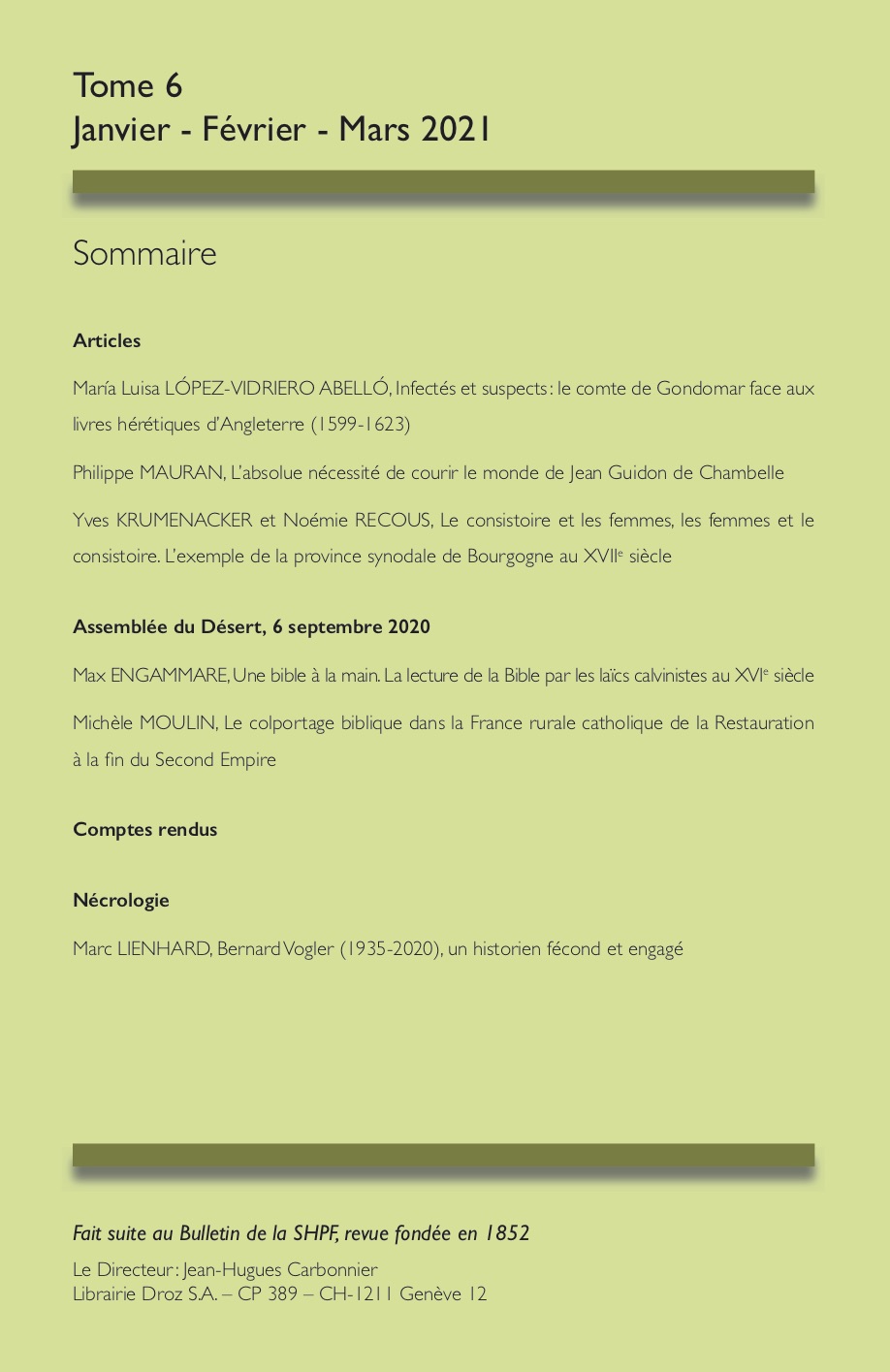Le consistoire et les femmes, les femmes et le consistoire
L’exemple de la province synodale de Bourgogne au XVIIe siècle
Abstract
Historical studies on consistories have been numerous, especially since the 1980s ; their role in social control and their functioning have been at the heart of that research. The question of the relationship between women and Protestantism has also been studied extensively, without the choice between women’s emancipation and the strengthening of patriarchy following the Reformation really having been decided – but these studies have little to do with France, and they have tended to neglect women of humble status. However, the intersection between these two historiographical fields is more recent and is still relatively little practised outside the Anglo-Saxon world, even though the study of the consistories from a gender perspective makes it possible to better understand how they functioned and to study the place of women within the Reformed communities. This is what this article aims to show, using the example of the Burgundy consistories. It demonstrates how women, at the heart of a reformist enterprise for regulating morals, sometimes succeed in playing on moral demands to get men condemned or to have a certain type of behaviour imposed.
How to Cite
More Citation Formats
Most read articles by the same author(s)
- Yves Krumenacker, pasteurs français face à la Révolution, Revue d'histoire du protestantisme: Vol. 1 n° 2 (2016): Varia
- Yves Krumenacker, Émile M. BRAEKMAN, Guy de Brès. Un réformateur en Belgique et dans le nord de la France (1522-1567), Revue d'histoire du protestantisme: Vol. 1 n° 4 (2016): Varia
- Yves Krumenacker, Jean CALVIN, Commentaire du Traité de la clémence de Sénèque, Revue d'histoire du protestantisme: Vol. 3 n° 3-4 (2018): Varia & Dossier
